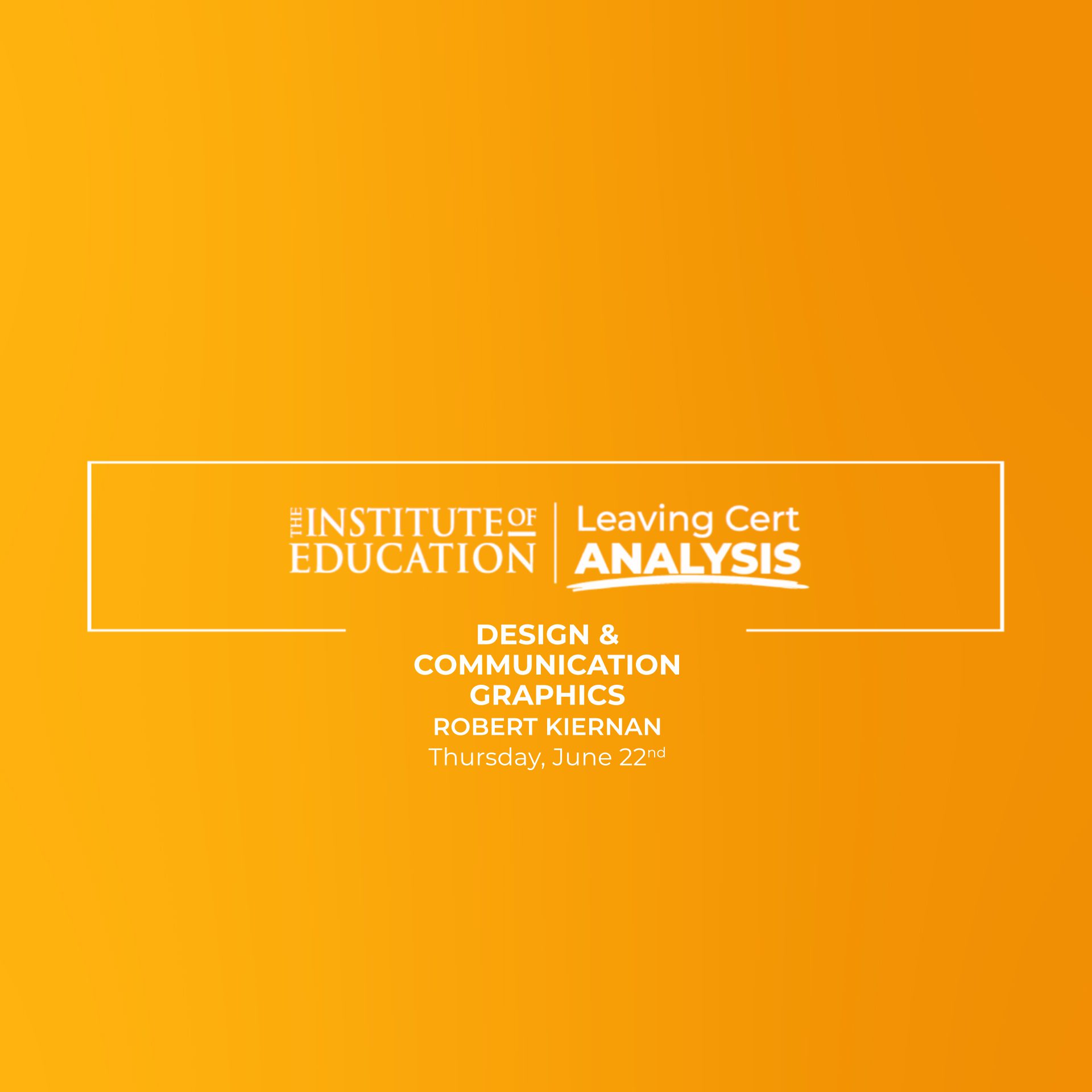Reaction to Leaving Certificate 2023 Design and Communication Graphics (Higher Level) by Robert Kiernan, DCG teacher at The Institute of Education.
- A paper that examined a wide range of skills.
- Students needed to think critically and apply foundational principles.
This was a fair and accessible paper. The Covid adjustment of answering one fewer question for Section C would have alleviated some of the stress of the exam hall and given students the chance to really apply their problem-solving capacity. The trends of recent years continued as we see a growing emphasis on the principles of conic sections and the interpenetration of solids, the latter making its first appearance as a long question since 2012.
Part A, while containing little choice, would have been a welcome beginning to the paper. The section tested a wide range of skills. The importance of Orthographic Projection: Planes and Traces was apparent here and, as a foundational skill taught early in the course, would have been well within the abilities of prepared students.
Part B’s B1 showed that interpenetration of solids is coming back into fashion. Over the last few years, it has been appearing more frequently in the short questions and so the next step was to graduate to a long question. B2 on the intersection of planes with the dihedral angle was very fair and manageable. The application of true shapes and true angles is the bread and butter of this section, and most will have covered this essential skill early in their Senior Cycle study. Students who felt they had good reason to predict axonometric projection will be relieved to see it in B3. All of these questions required students to be thoughtful and adaptive but there was nothing that would shock and upset a prepared student.
Part C, on Applied Graphics, is where students come into their own. This year they only had to do one question rather than two and so students could choose what best suits their preferred approach. C1 on Geologic Geometry was true to form – anyone who prepared this topic would have found a question that met their expectations neatly. C2 and C3 emphasised transferable skills and problem solving. C3 did have a curveball by asking about focal spheres in part four. Focal spheres are a key concept that everyone will have covered, but it is rare to see them singled out for examination like this. The question itself wasn’t hard, just atypical and so might deter those making quick judgment calls on question selection. C4 requires a lot of declarative knowledge and keeping track of variants, attracting students that like real world applications of moving parts and mechanisms. C5 is always time-consuming but will favour those who enjoy rigorous procedure and the perfectly pared pencil. The question’s demands are exact, stressing adherence to standards and conventions, but don’t require the students to grapple with any novel concepts.
Overall, this was a paper that students will be happy with. The variety of topics and skills tested allowed students to select answers that play to their particular skillset.

